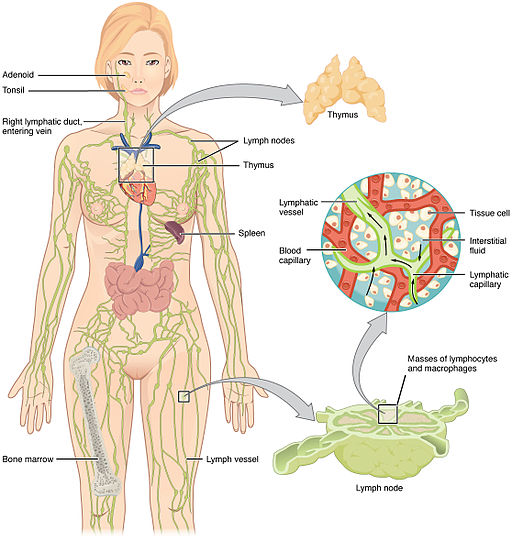 Non-Hodgkin lymphoma (aka NHL) is a cancer of the lymphatic system. There are a number of different types of NHL some of which grow slowly and need little treatment, and others which grow very quickly and need urgent treatment.
Non-Hodgkin lymphoma (aka NHL) is a cancer of the lymphatic system. There are a number of different types of NHL some of which grow slowly and need little treatment, and others which grow very quickly and need urgent treatment.
NHL is a disease of the body’s cells. In normal circumstances, cells are renewed or replaced as they age or become damaged. The cell divides and makes a copy of itself. If during the process, cell division gets out of control, due to the invasion of cancer-causing viruses, then too many cells are created and cancer can develop. In the case of NHL, blood cells named lymphocytes become abnormal, their numbers increase and a tumor is formed.
Generally, NHL forms in the lymph nodes, but it can start anywhere in the body including the tonsils, the stomach, bowel, thyroid, or in the skin. Lymphocytes travel around the body and so NHL spreads easily, reaching other lymph nodes, or into the bone marrow, liver or lungs, where they can carry on dividing and forming a new tumor.
Some 80% of all lymphomas diagnosed annually are NHL. They can occur in people of any age although they are more likely to occur in people over 65, with slightly more men than women affected.
Types of Lymphomas
Lymphomas are often described as B-cell lymphomas or T-cell lymphomas. Approximately 9 out of 10 people diagnosed with NHL have a B-cell lymphoma, whereas T-cell lymphomas are much less common.
Indolent lymphomas (also called low-grade) grow very slowly and may need little or no treatment for months or possibly years. Aggressive lymphomas (also called high-grade) grow quickly and need immediate treatment. Mantle cell lymphoma is somewhere between indolent and aggressive lymphoma and is often treated as an aggressive lymphoma.
What are the Signs and Symptoms of Non-Hodgkin Lymphoma?
The most common symptom of non-Hodgkin lymphoma is a painless swelling in a lymph node, usually in the neck, armpit or groin caused by an excess of affected lymphocytes (white blood cells) collecting in a lymph node. Quite often these nodes swell as a response to infection and they may not indicate NHL.
Other more general symptoms of NHL can include the following:
- Persistent tiredness or fatigue
- Night Sweats
- Unexplained weight loss
- High temperature (fever)
- Persistent itching of the skin all over the body
- Difficulty recovering from infections or developing infections more often
- Enlarged lymph nodes
- Swollen abdomen (belly)
- Feeling full after only a small amount of food
- Chest pain or pressure
- Shortness of breath or a cough
- Low red blood cell counts (anemia)
- Easy bruising or bleeding (from low blood platelet counts)
Many of these symptoms can be caused by things other than cancer. Check with your doctor if you are concerned.
Causes and Risk Factors for Non-Hodgkin Lymphoma
While we know that NHL is caused by a change in the DNA of white blood cells, the exact cause is not known. DNA instructs the cells to grow and reproduce, and it appears that it is a mutation in the DNA that changes these instructions and the cells keep growing multiplying uncontrollably.
Those most at risk
- Those with immune deficiency from medical conditions such as HIV or those that take medication to suppress the immune system such as those who have had an organ transplant.
- Those with an autoimmune condition such as lupus or Sjogren’s syndrome
- Those who have been exposed to the Epstein-Barr virus or to the Human T-cell lymphotropic virus (HTLV)
- Those who have received chemotherapy or radiotherapy for an earlier cancer
- Those with coeliac disease
- Exposure to certain chemicals, such as those used to kill insects and weeds, may increase your risk of developing NHL.
5 Year Survival Rates
Approximately 70 out of every 100 people (70%) will survive for 5 years or more.
Almost 65 out of every 100 people (65%) will survive for 10 years or more after they are diagnosed.
The outcome for NHL largely depends on the type of lymphoma and whether it is low grade (indolent) or high grade (aggressive).
There is a certain amount of risk for long-term problems after treatment, including infertility. There is also an increased risk of developing another type of cancer in the future.
Successfully Treating Non-Hodgkin Lymphoma
For further information on available treatments, please see our treatment program for non-Hodgkin Lymphoma.

